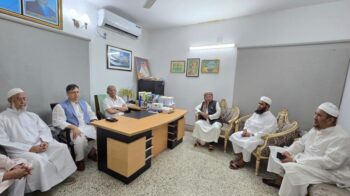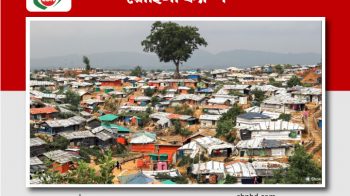UNB NEWS
One in four Rohingya children in Bangladesh are malnourished, placing them at increased risk of death, warns Save the Children.
According to new assessment data from Save the Children and four other organisations a quarter of Rohingya children under five who fled to Bangladesh in the past two months are suffering from acute malnutrition.
The assessment shows about a third of those children are ‘severely’ malnourished, meaning they are nine times more likely to die than the children who are not malnourished. They are significantly more vulnerable to infections and diseases like watery diarrhoea and chest infections.
“The situation is worse than we feared,” said Nicki Connell, Save the Children’s Emergency Nutrition Advisor in Cox’s Bazar, in a media release on Thursday.
“Large numbers of Rohingya children are arriving in Bangladesh already malnourished. Then they are put in a situation where they have to rely on food rations to survive, where hygiene standards are poor, where clean drinking water is hard to come by and lots of people are getting sick as a result.
“Every day we see children arrive at our health clinics in desperate need of theraputic food to stave off death. The scale of the problem cannot be overstated,” she said.
Connell warned that it wasn’t just children who were suffering. “It is rare to see this level of malnutrition among children, even in a crisis like this, and even rarer to see it affecting adults as well. A few days ago two men came in to one of our clinics, one weighing 32kg and the other 34kg,” she said.
“Seeing cases like this is a sure sign we have a major malnutrition crisis on our doorstep. It’s essential the humanitarian community steps up its life-saving nutrition programming in order to prevent a full blown catastrophy in which large numbers of children may die.”
The preliminary assessment data, gathered over the past two weeks, collected vital information on the health and feeding practices of young children and women across 405 households in one of the settlements where newly arrived and longer established Rohingya live. It is believed that rates of malnutrition in areas where there are only newly arrived Rohingya will be even higher.
As a result, Save the Children is rapidly scaling up its health and nutrition work, especially when it comes to treatment and prevention of malnutrition. The aid agency is already running two primary health care clinics on the outskirts of the camps, where the hardest to reach families live.
It is in the process of setting up seven more clinics to meet the growing health needs. Also, counsellors are providing skilled support to mothers struggling with breastfeeding in Save the Childrens’ mother baby areas.
Earlier this week Save the Children also opened a treatment centre for malnourished children next to its clinic in the Kutupalong extension camp, with other centres scheduled to open within the next two weeks, the media release said.
The camps in Cox’s Bazar district lack basic hygiene and healthy food. Many Rohingya families are struggling to survive, often on just one meal per day of mostly rice and lentils.
“This research is the most comprehensive snapshot we have on the malnutrition situation amongst Rohingya in Bangladesh and it paints a pretty bleak picture. This is the alarm bells ringing loud and clear. We cannot ignore them,” Connell said.
More than six lakh Rohingya have fled to Bangladesh’s Cox’s Bazar district since August 25, when there was a major escalation of violence in Myanmar’s northern Rakhine State that saw reports of entire villages being burnt to the ground, civilians being shot at as they tried to flee and women being raped.












